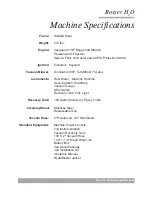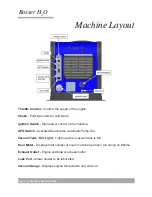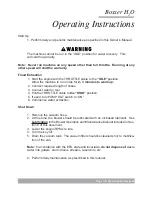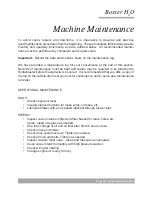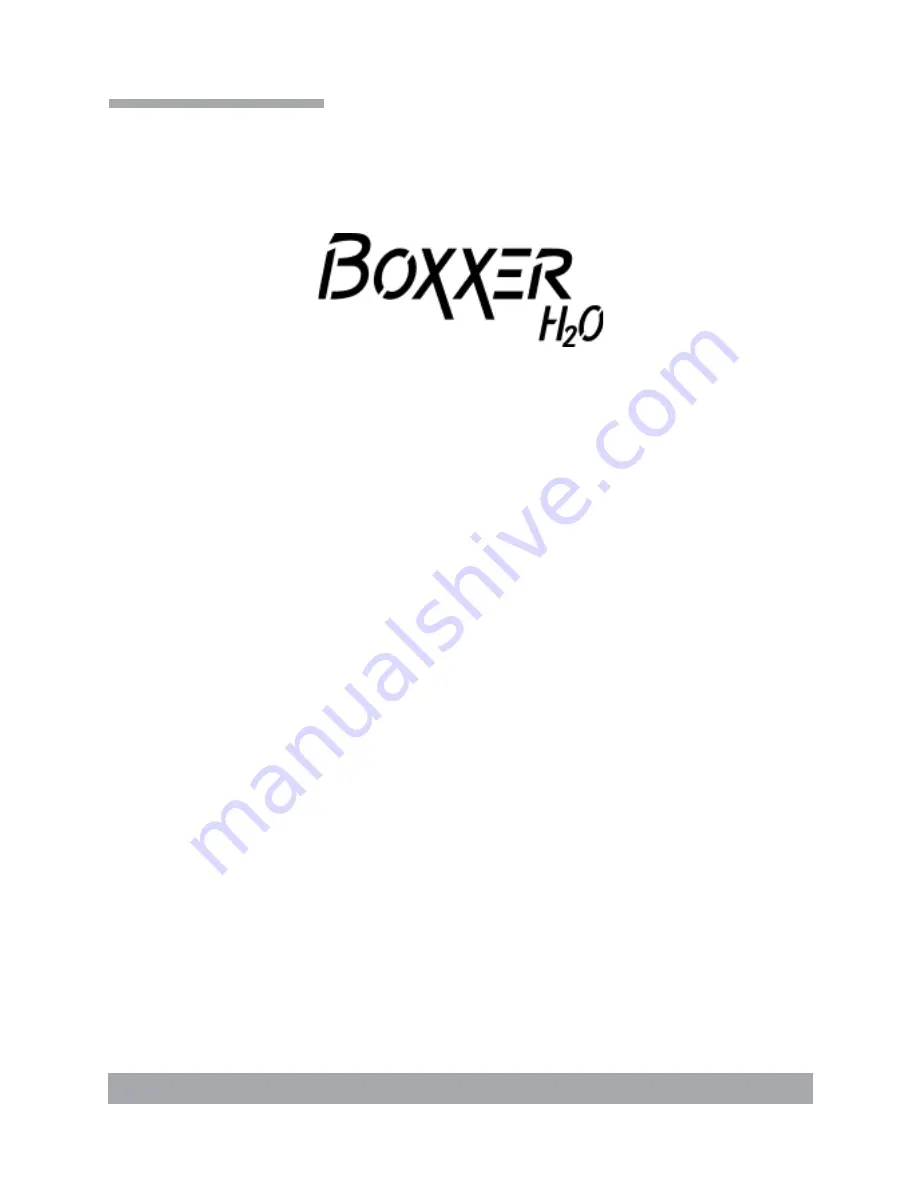
Page 1-1: General Information
Boxxer H
2
O
The HydraMaster Boxxer H20 is a purpose designed machine to accommodate the needs
of the Water Restoration Contractor who is extracting water and not cleaning carpet. The
basis of the machine is a 27 HP Liquid Cooled V Twin engine that is directly coupled via
the patented BUCS coupling system to a Tuthill 4007 Dominator blower. This combination
produces over 400 CFM of air flow, more than enough to extract water with one or two
wands.
In addition to this high performance Power Pack, the Boxer H20 comes with a 100 gallon
recovery tank and the reliable Dura-Flo Automatic Pump Out is an option which allows
you to extract water without the need to shut down and empty the recovered water.
In addition to the obvious performance aspects of this machine, it was designed to deliver
maximum reliability and to be easily serviced. All the major components have been proven
in other HydraMaster Truckmounts and this new machine was put together with an eye
towards simple, quick maintenance. All service points are conveniently located so routine
maintenance takes only a few minutes to perform.
As with any machine, it is important to use the Boxxer H2O correctly. Operating the ma-
chine is simple; just start the engine with the vacuum hoses disconnected, let it warm up
for two or three minutes, advance the throttle to the maximum operating position, connect
the vacuum hoses and you are ready to extract water. We strongly suggest that the op-
erator of the machine be well acquainted with the IICRC guidelines for Flood Extraction
and with the various methods of carpet drying that are currently being used. It is also
recommended that the machine operator be familiar with the local municipality’s require-
ments for the proper disposal of waste water. Typically waste water is to be deposited in
the city sewer system and never in a gutter or storm drain where it would eventually find
it’s way into a stream, river, lake, ocean or public water supply system.
General Information

















